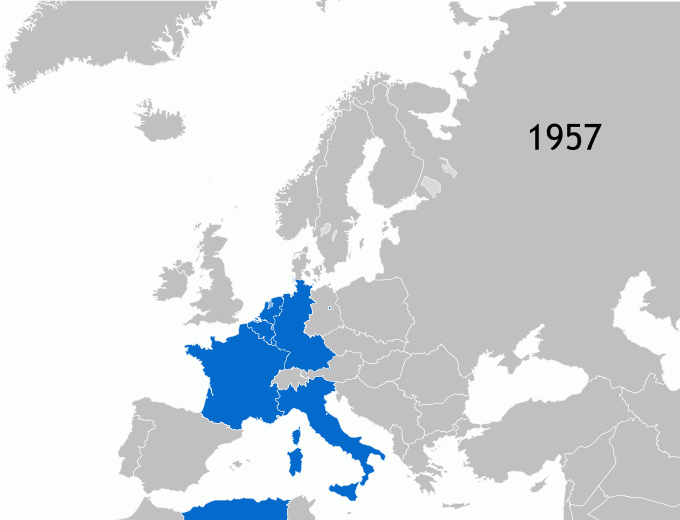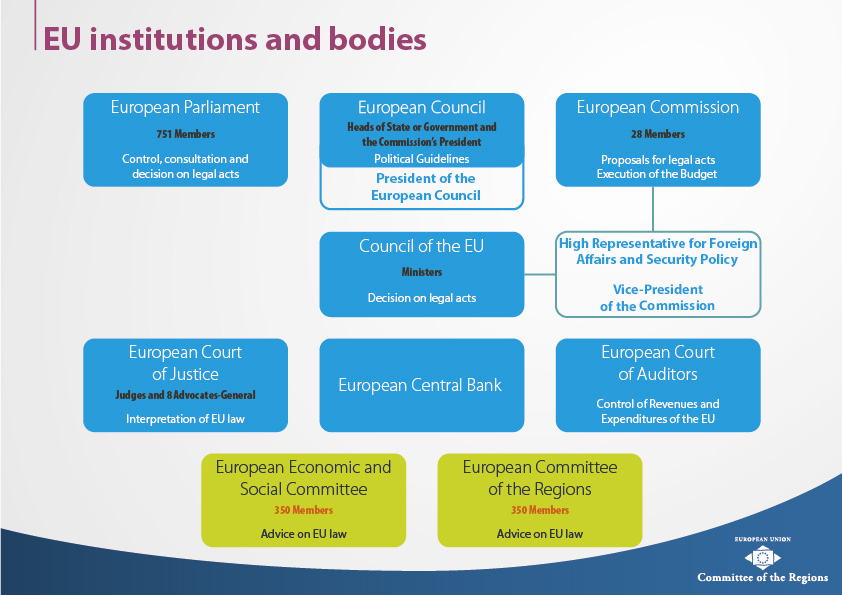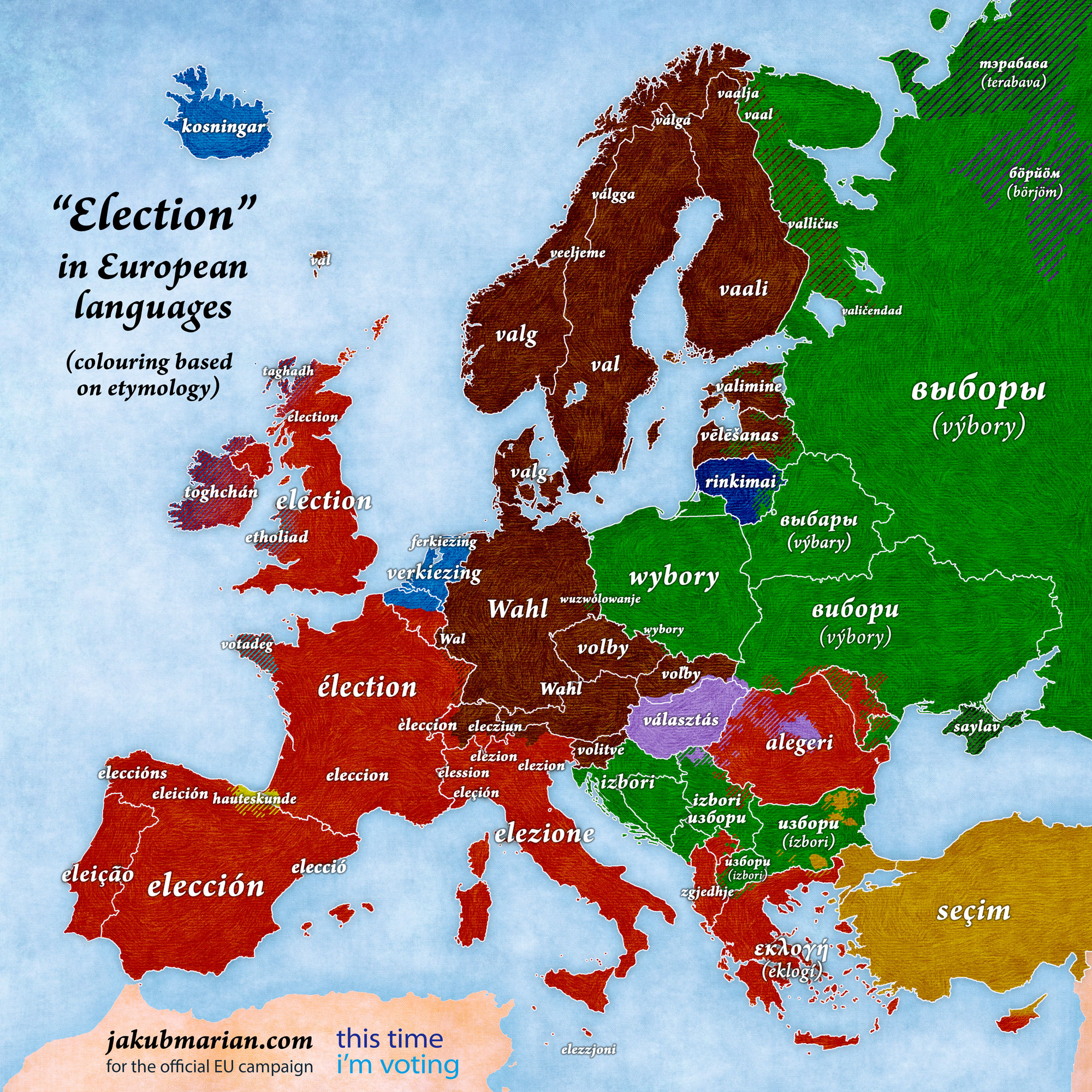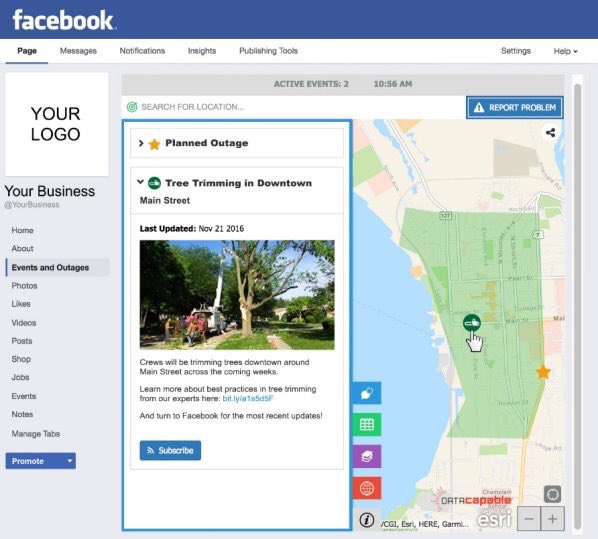
Top 30 maps and charts that explain the European Union & Europe
What is the current state of Europe and European Union? On March 25, 1957, leaders of six countries – Belgium, Germany, France, Italy, Luxembourg, and the Netherlands – met in Rome and signed two treaties that established the European Economic Community (EEC) and the European Atomic Energy Community, later transformed into the European Union.
Although Europe is experiencing growing turbulence related to migration crisis, terrorist attacks, and Brexit, among others, the EU project is still the best thing that happened to the continent after The World War II. It allowed keeping peace and wealth for long years and we hope that it will stay that way for the next generations.
These maps and charts try to explain the sense of European Union and Europe.
1. History of the European Union
source: Wikipedia
2. EU member states as of 2023
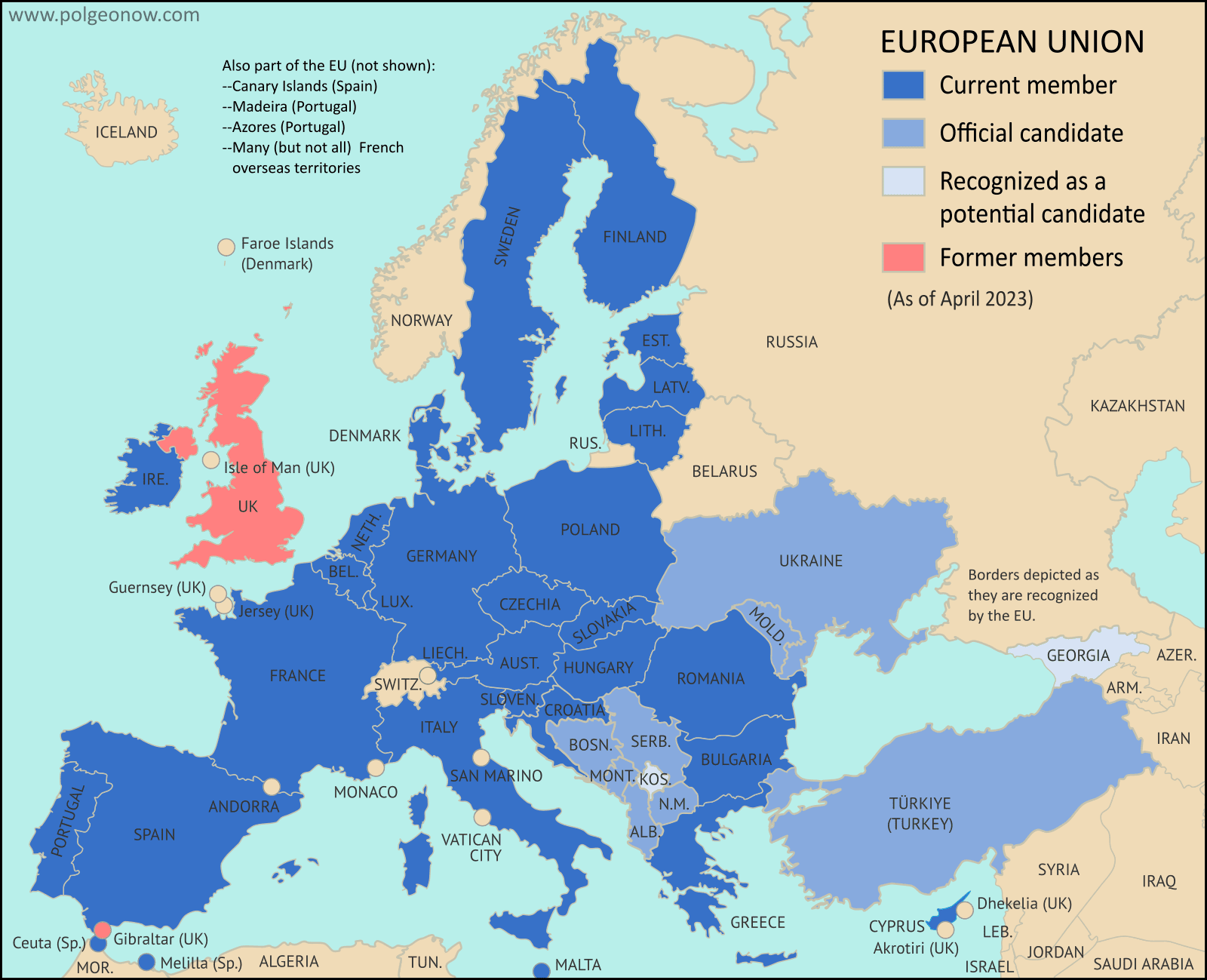
source: Political Geography Now
3. Europe Physical Map
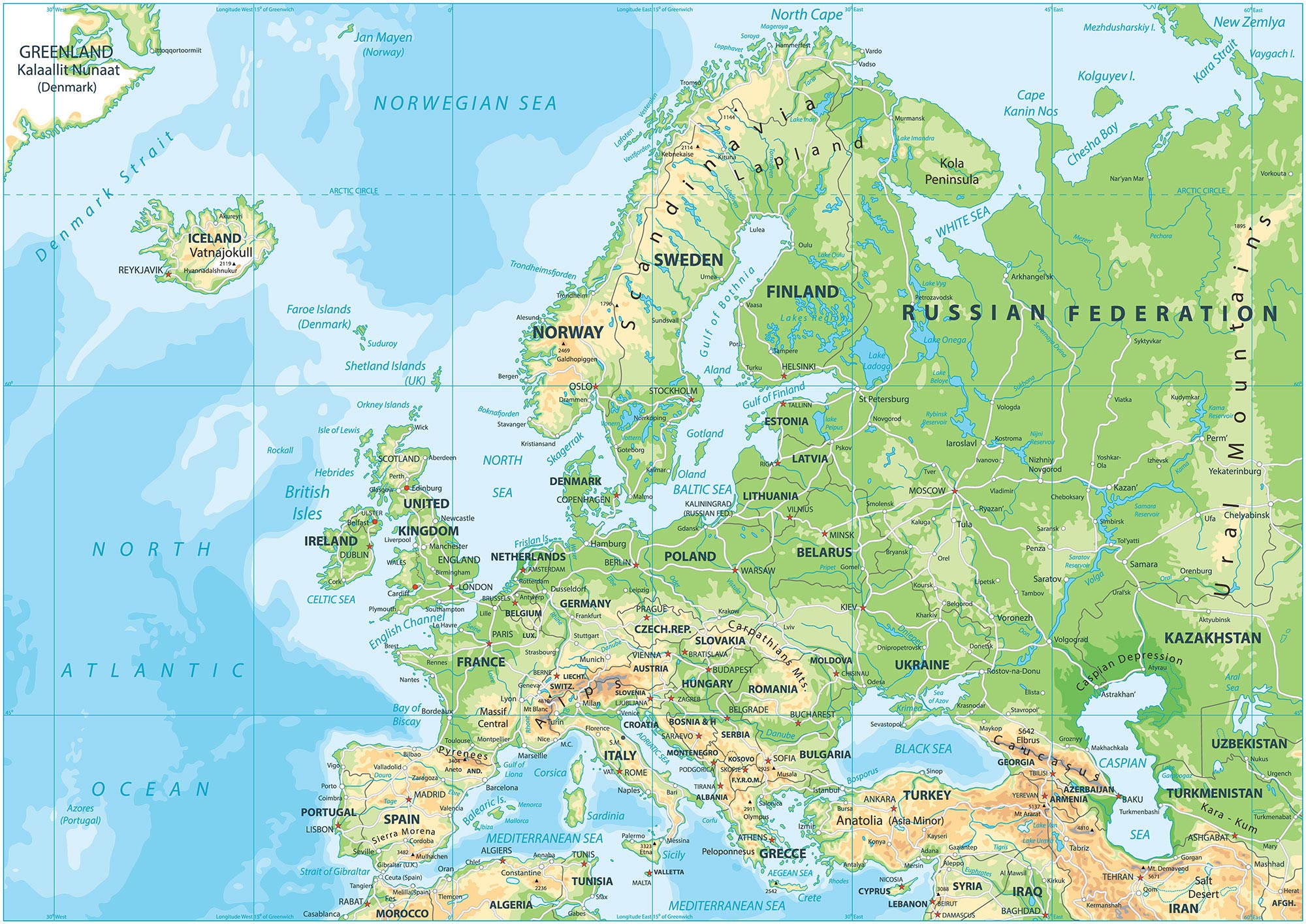
source: GIS Geography
4. Parliamentary Seats in UE in 2024
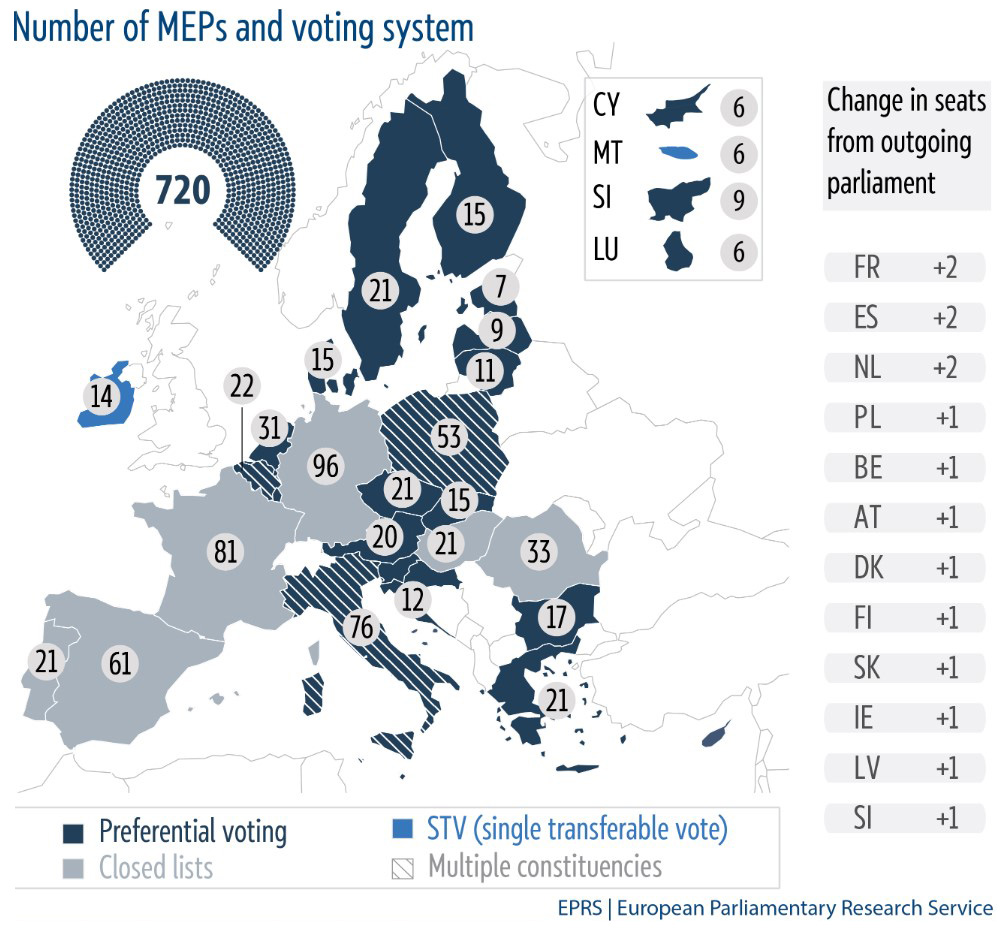
source: La Moncloa
5. The map of Europe by how right- or left-wing the government is in 2022
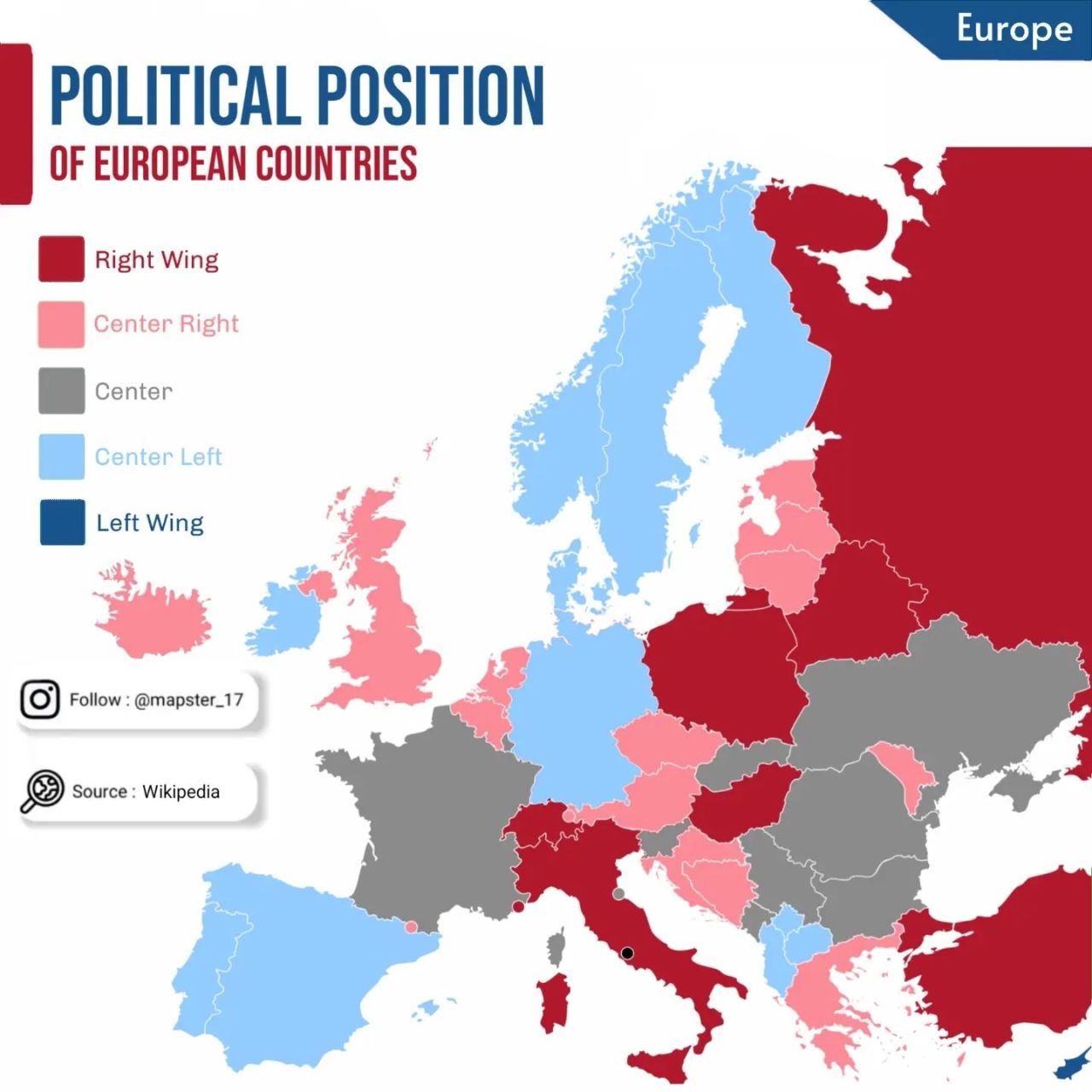
source: Instagram
6. EU Institutions
source: EU
7. Corruption in EU in 2023
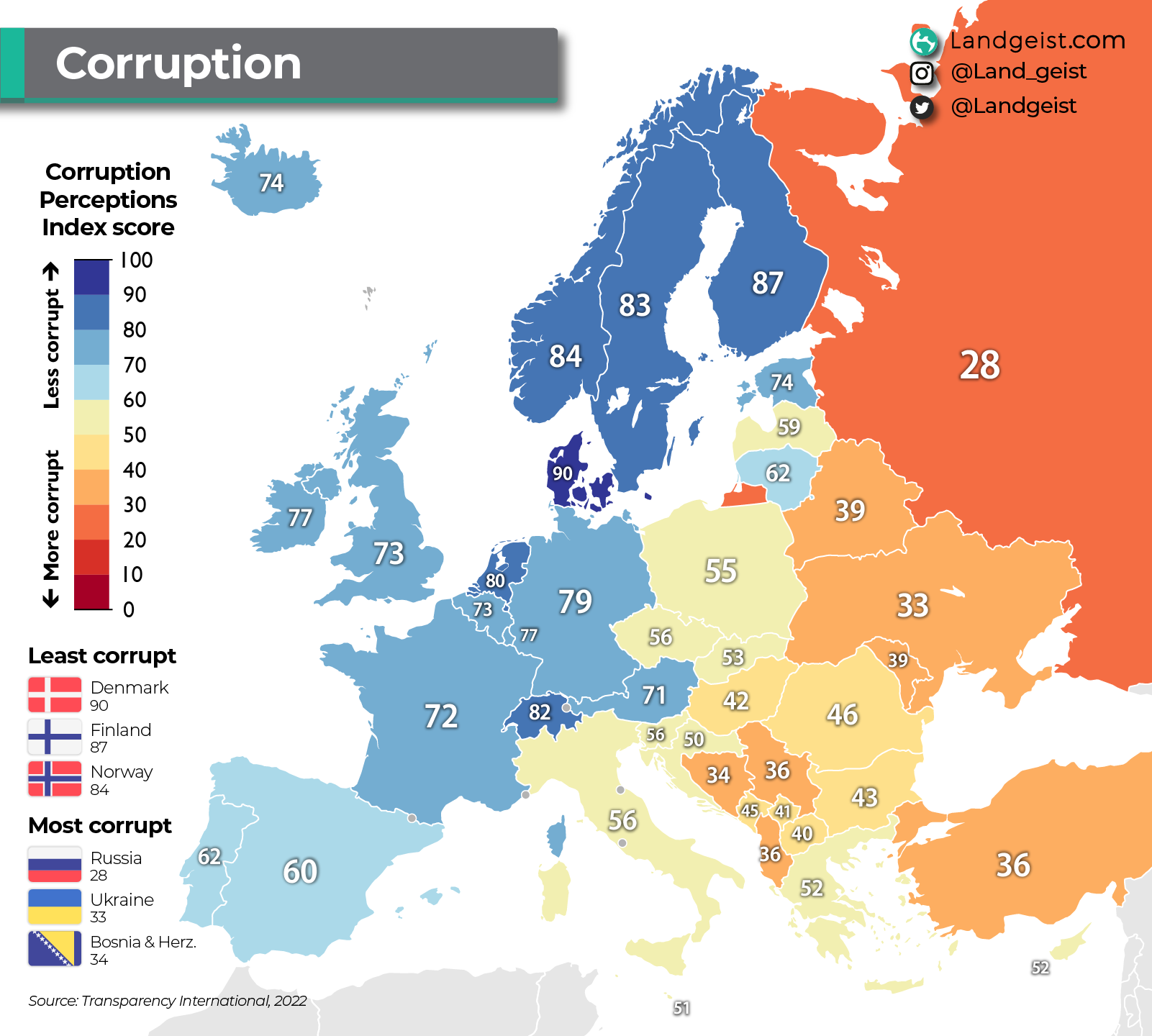
source: Landgeist
8. 2024 GPD forecasts
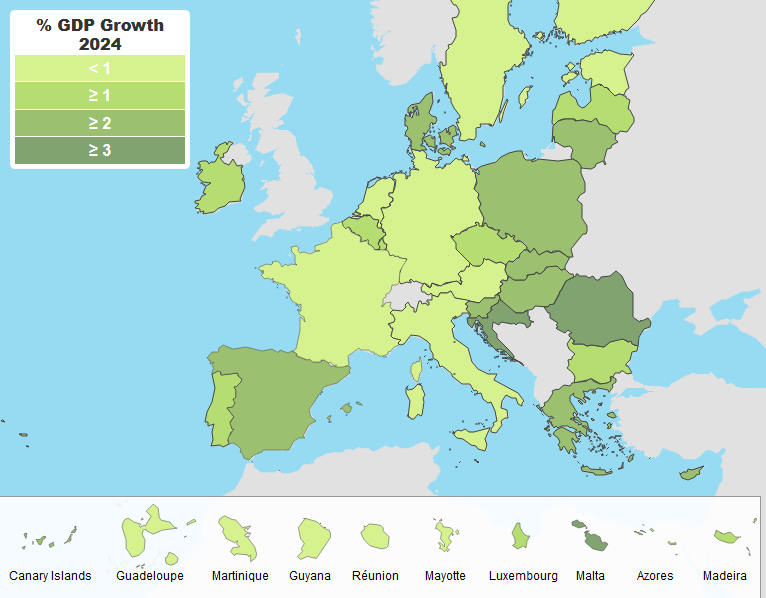
source: europa.eu
9. Net average monthly salary
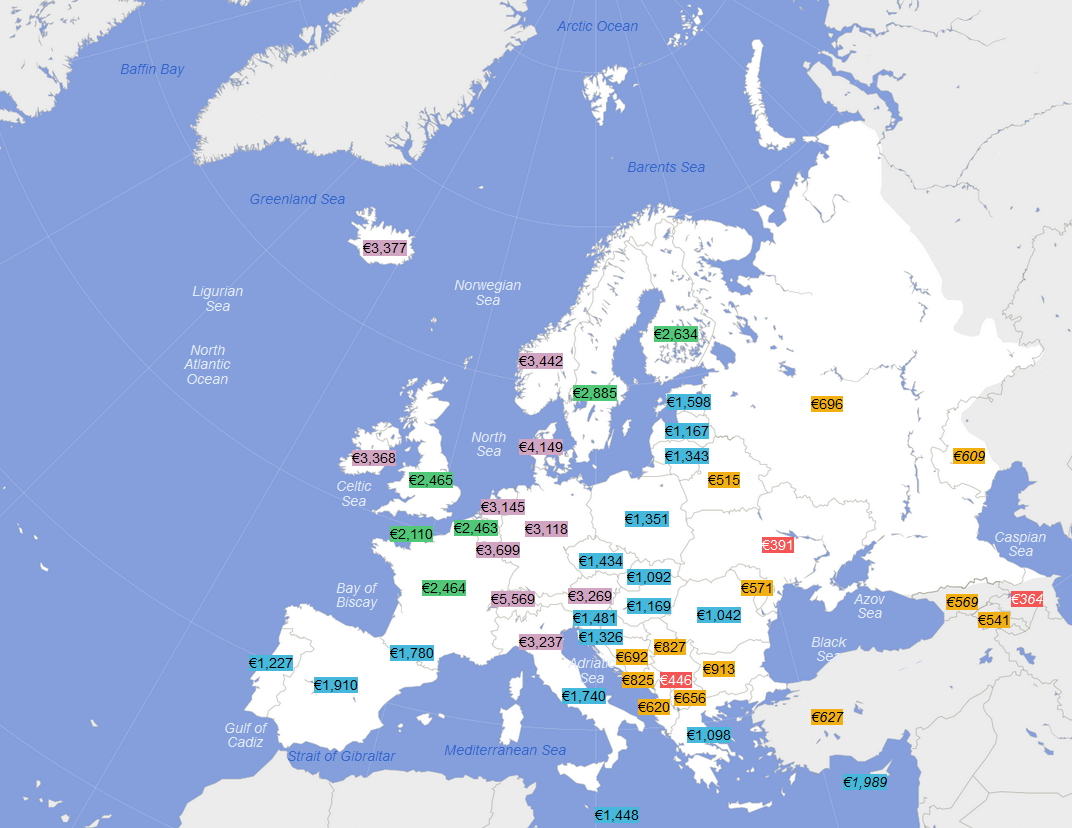
source: Wikipedia
10. Currencies in EU in 2023

source: Political Geography Now
11. Europe’s unemployment in 2022
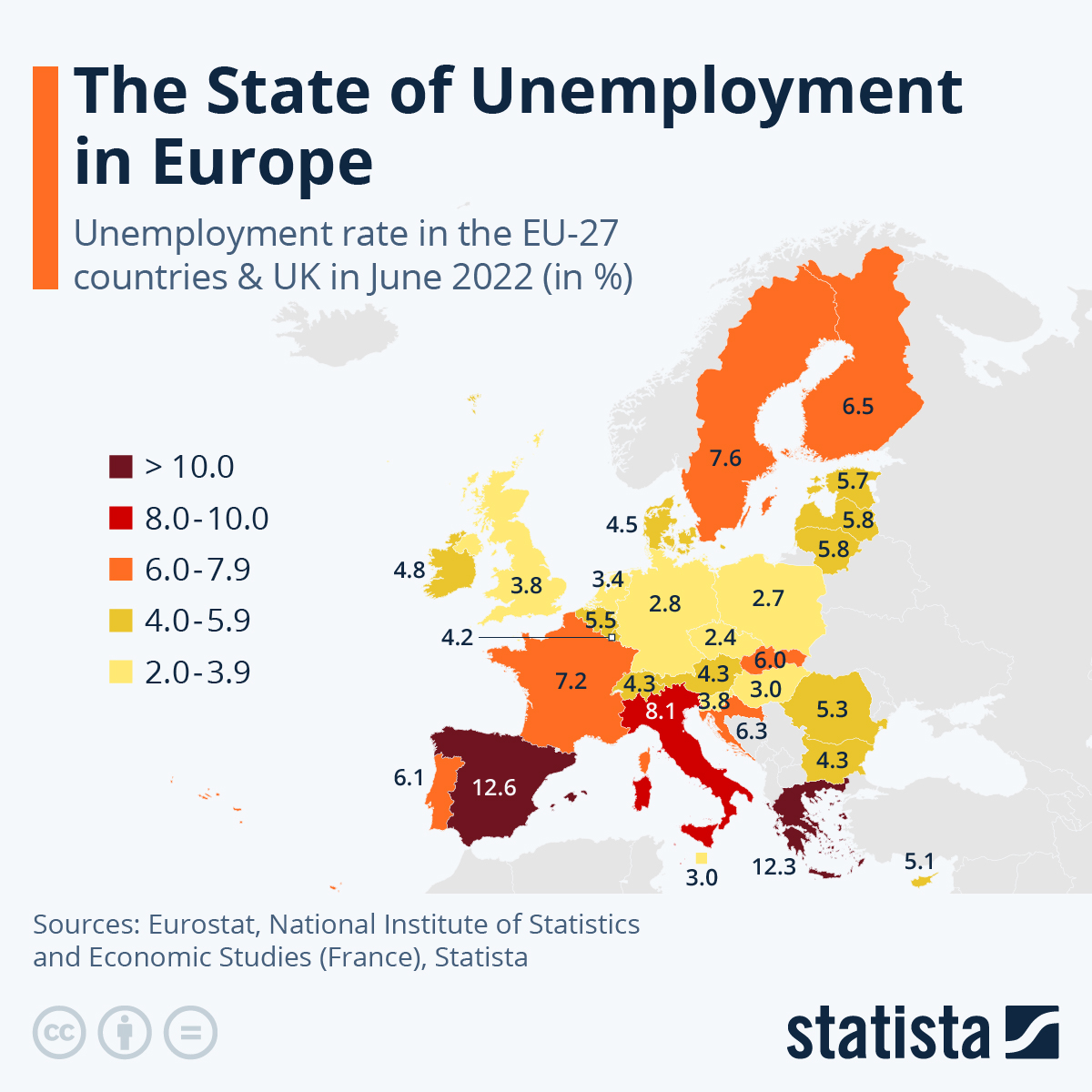
source: Statista
12. Youth Unemployment in Europe in 2023
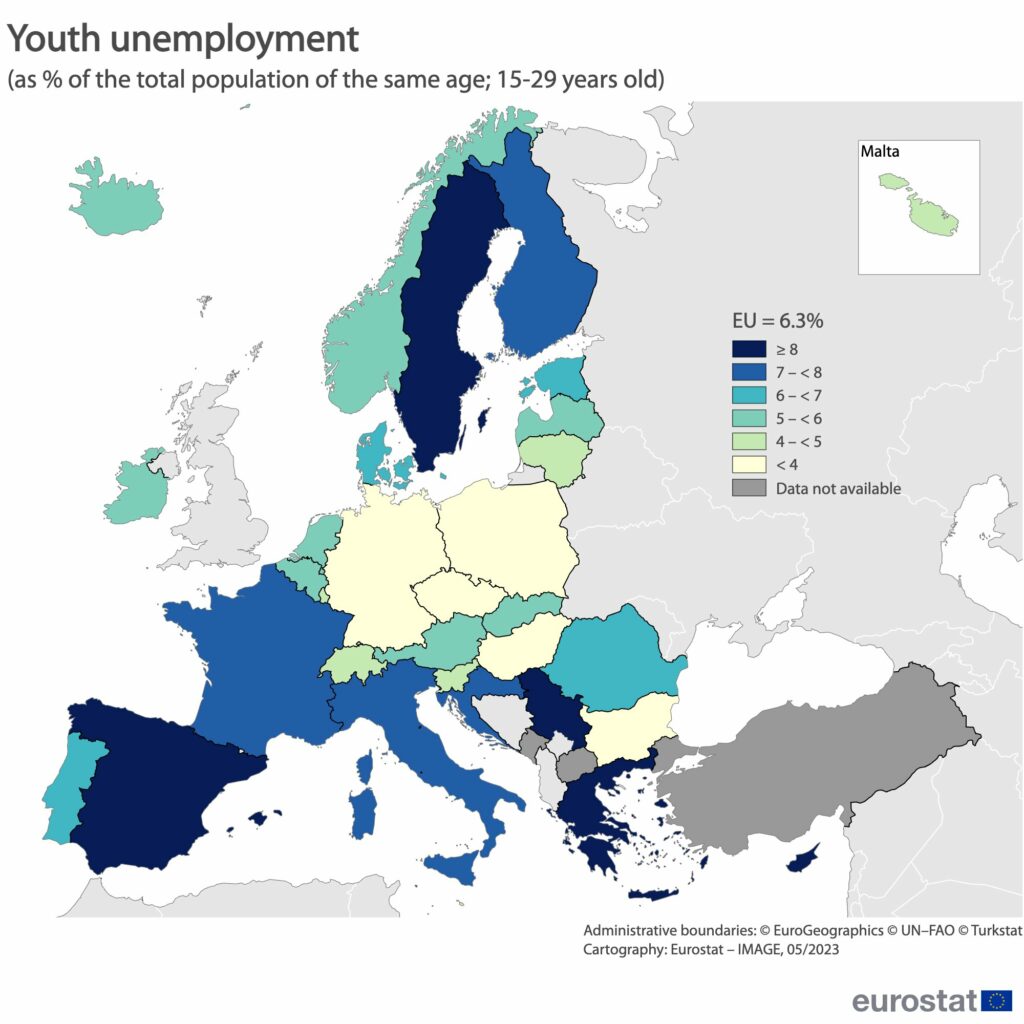
source: Eurostat
13. Europe’s ageing problem in 2020
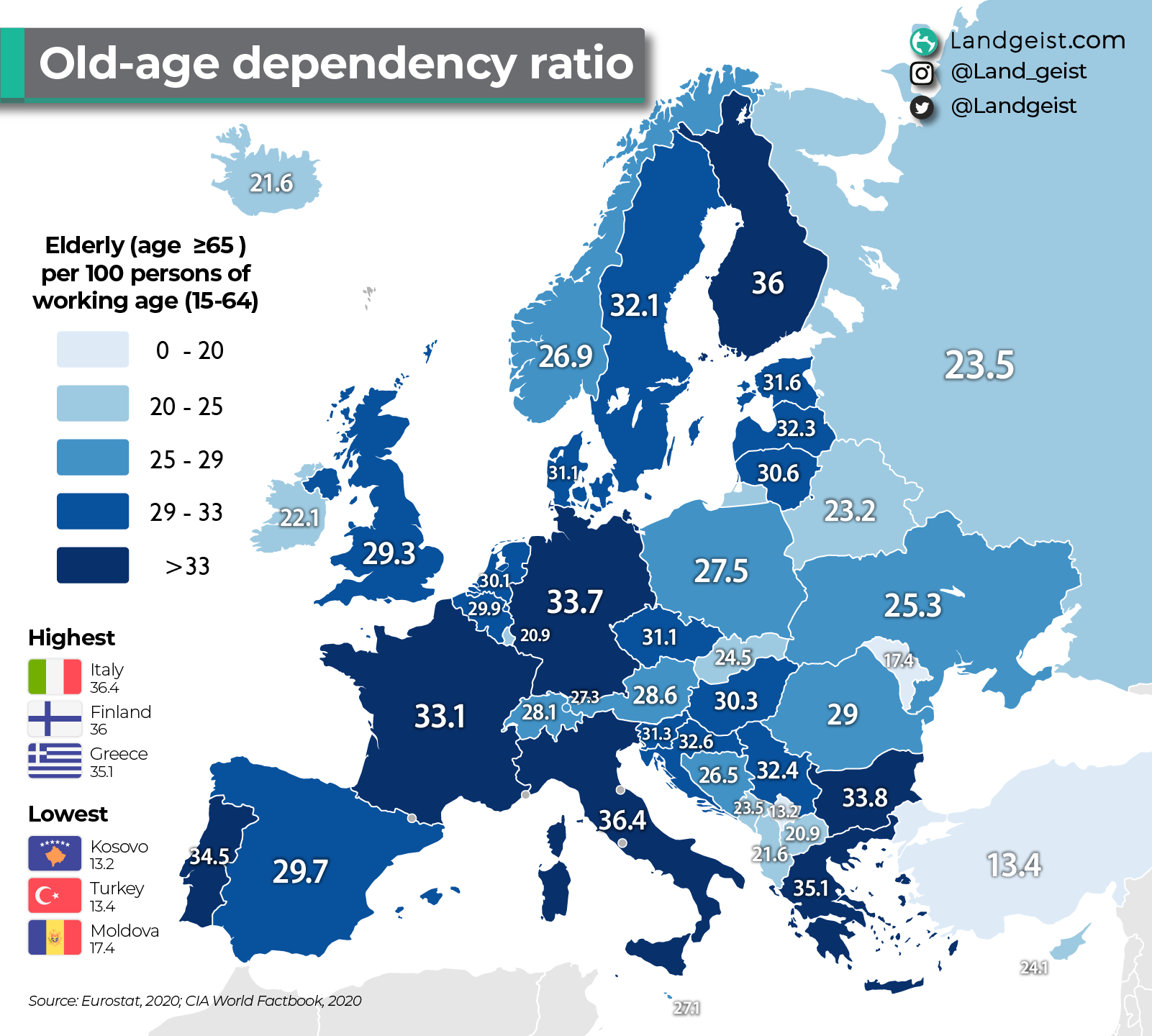
source: Landgeist
14. Share of population over 65 in 2023
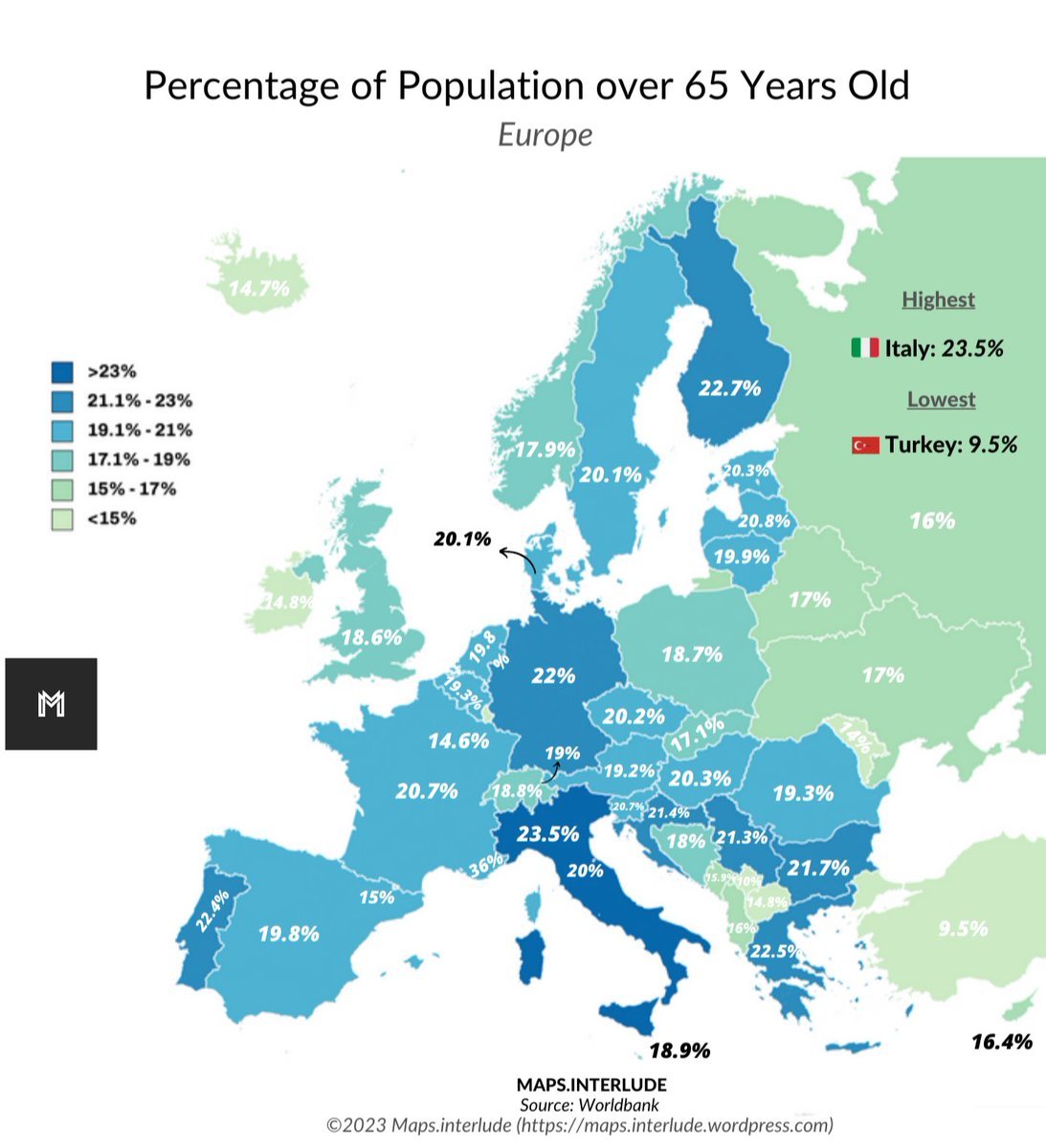
source: Maps on the Web
15. Map of Europe’s population shifts
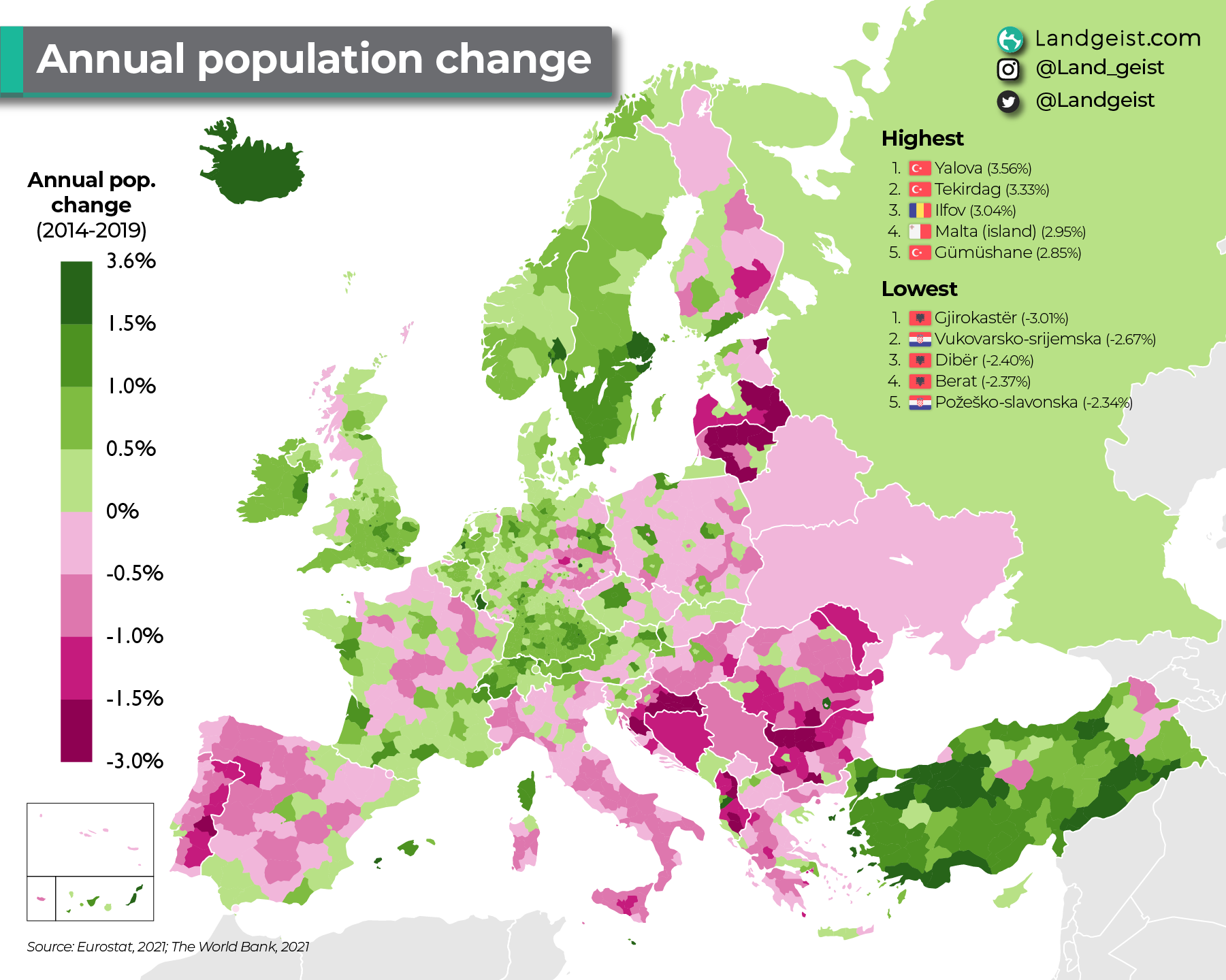
source: Landgeist
16. Immigrant Population in Europe in 2021
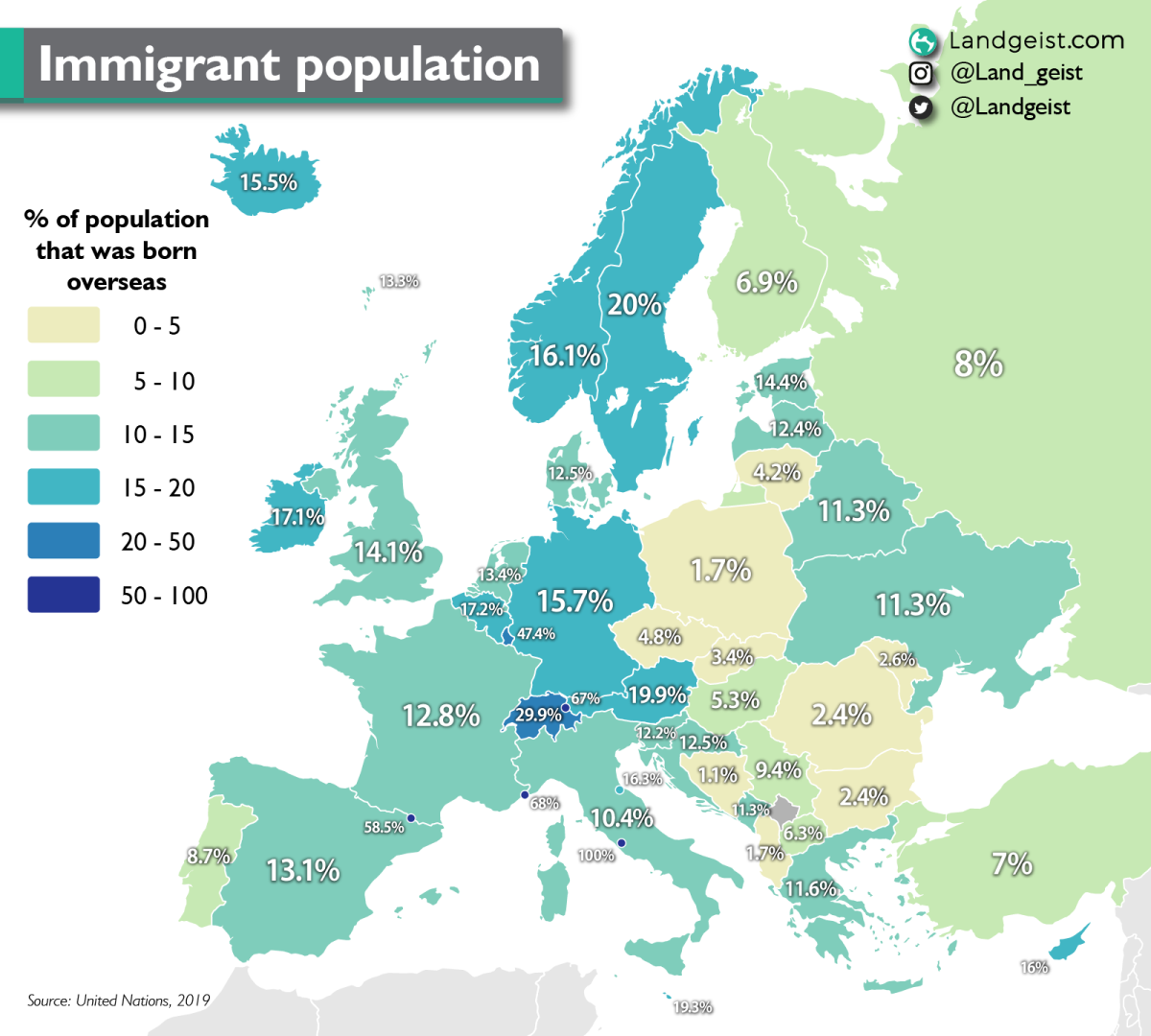
source: Landgeist
17. “Election” in European languages
18. Life expectancy in Europe in 2021
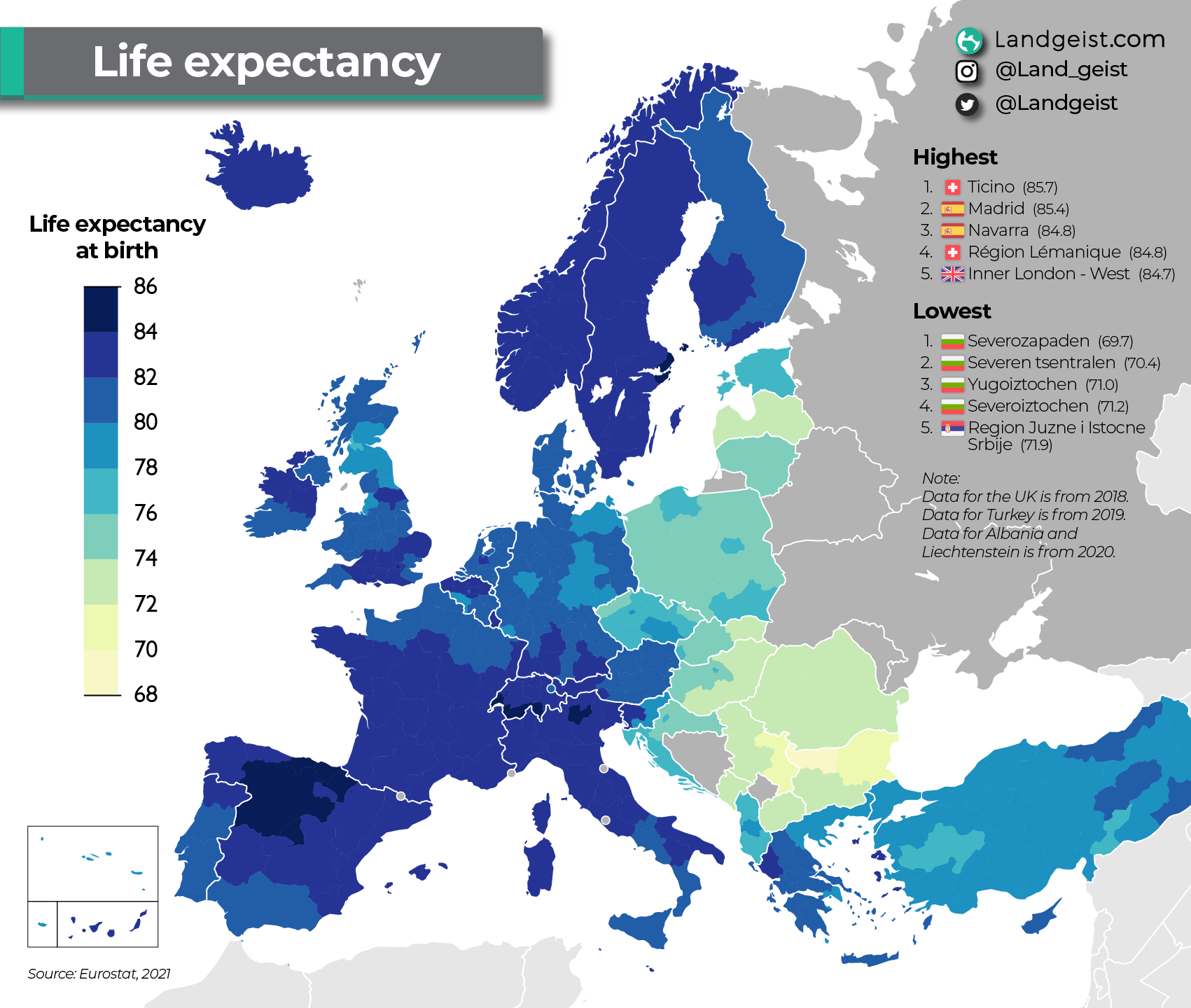
source: Landgeist
19. EU member states and NATO in 2024
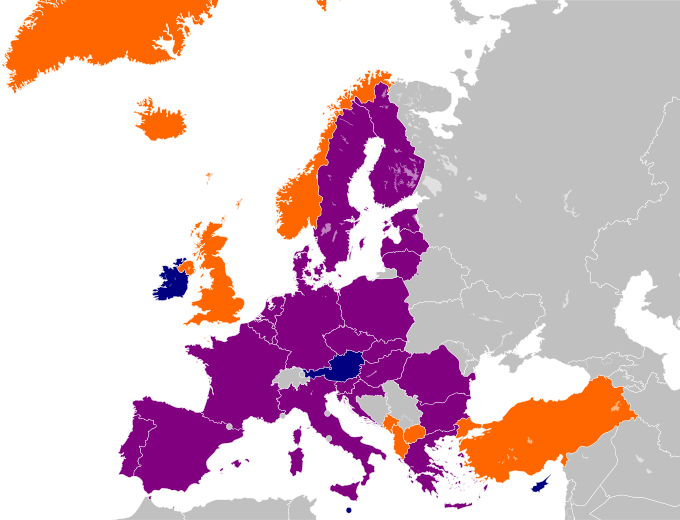
A map showing European membership of the EU and NATO
EU member only
NATO member only
Member of both
source: Wikipedia
20. Daily Alcohol Consumption in Europe in 2019
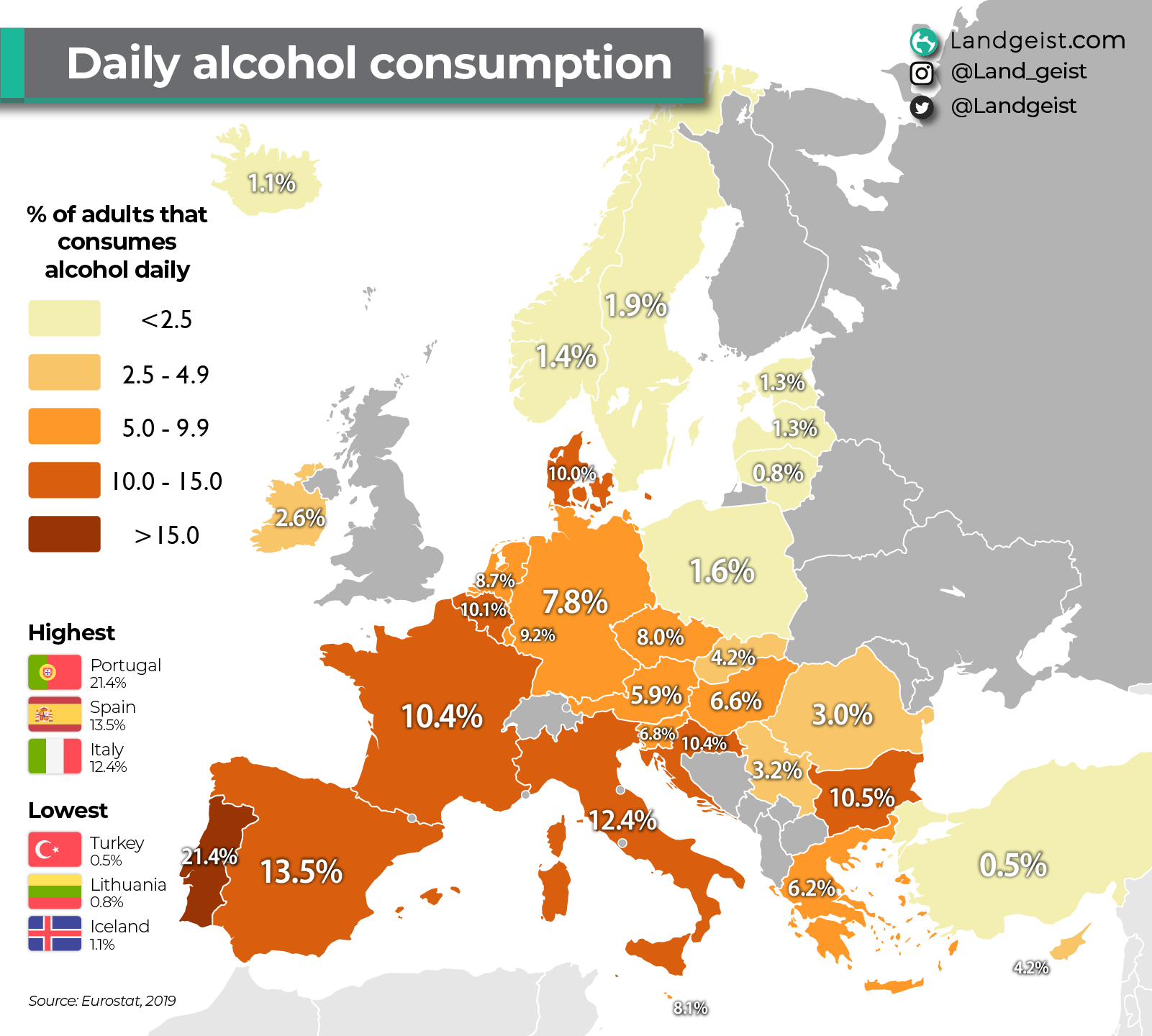
source: Landgeist
21. Europe country most valuable export goods
source: visualcapitalist.com
22. Map of Schengen Area
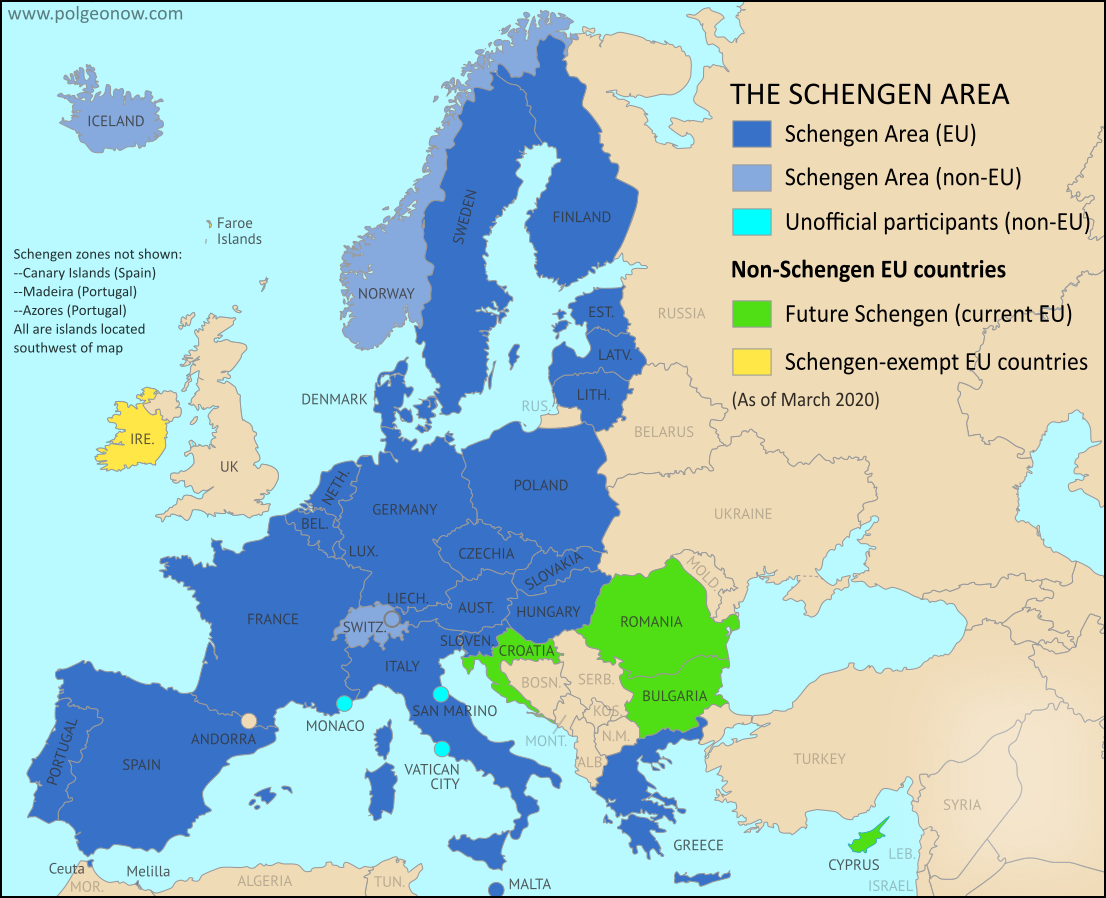
source: Political Geography Now
23. Europe’s 100 Busiest Airports
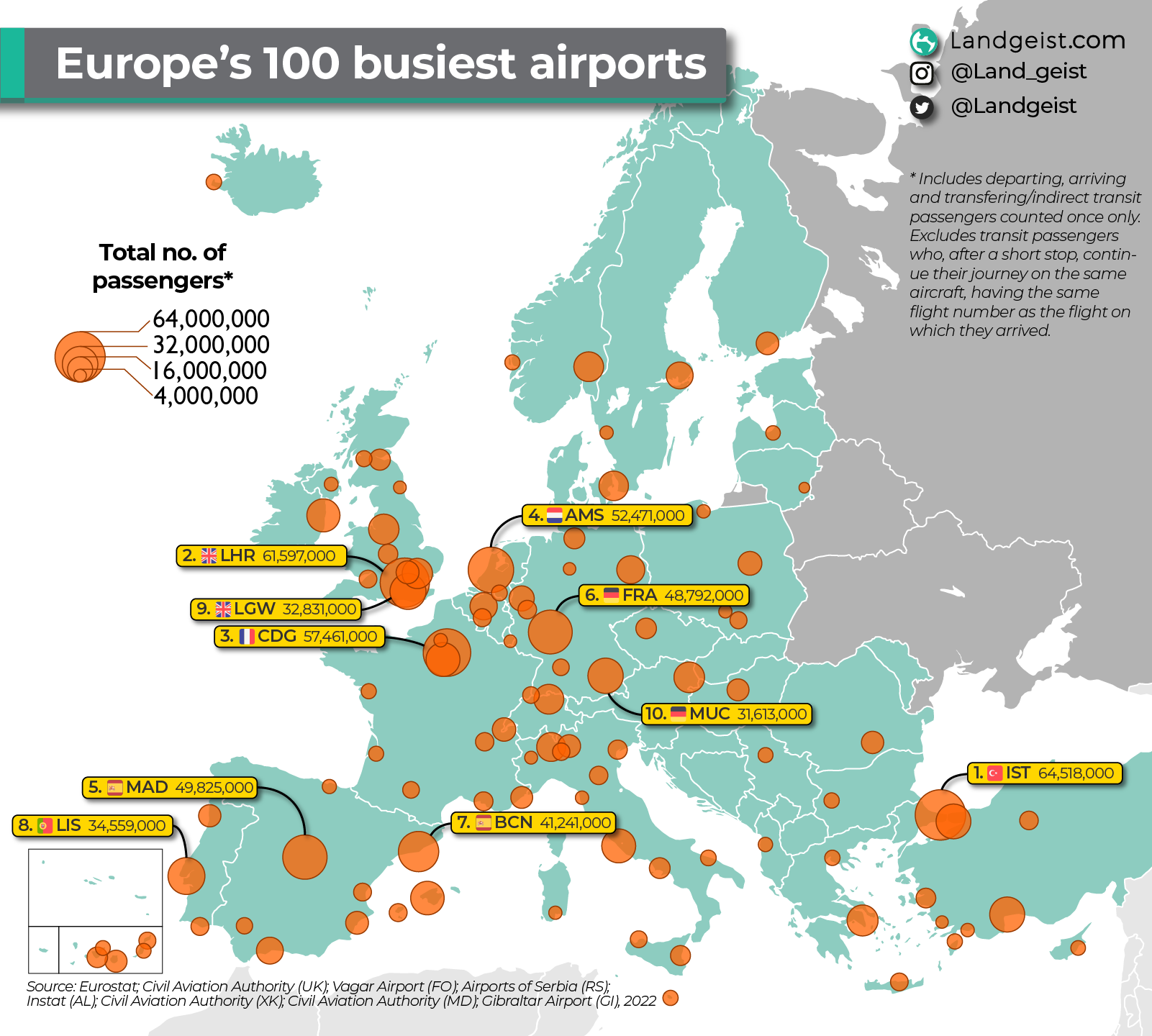
source: Landgeist
24. Annual Working Hours in Europe
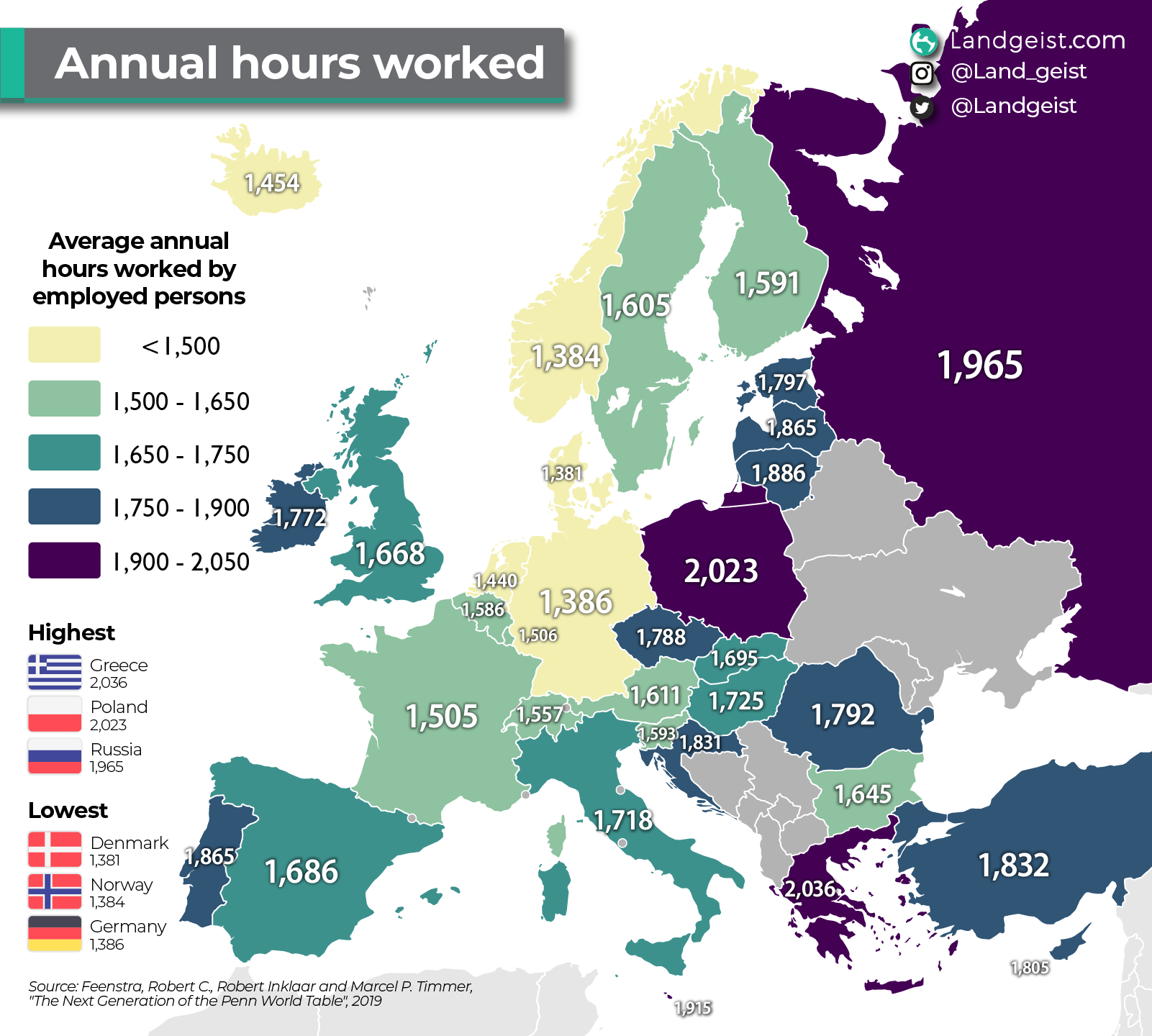
source: Landgeist
25. LGBT Rights in Europe in 2024
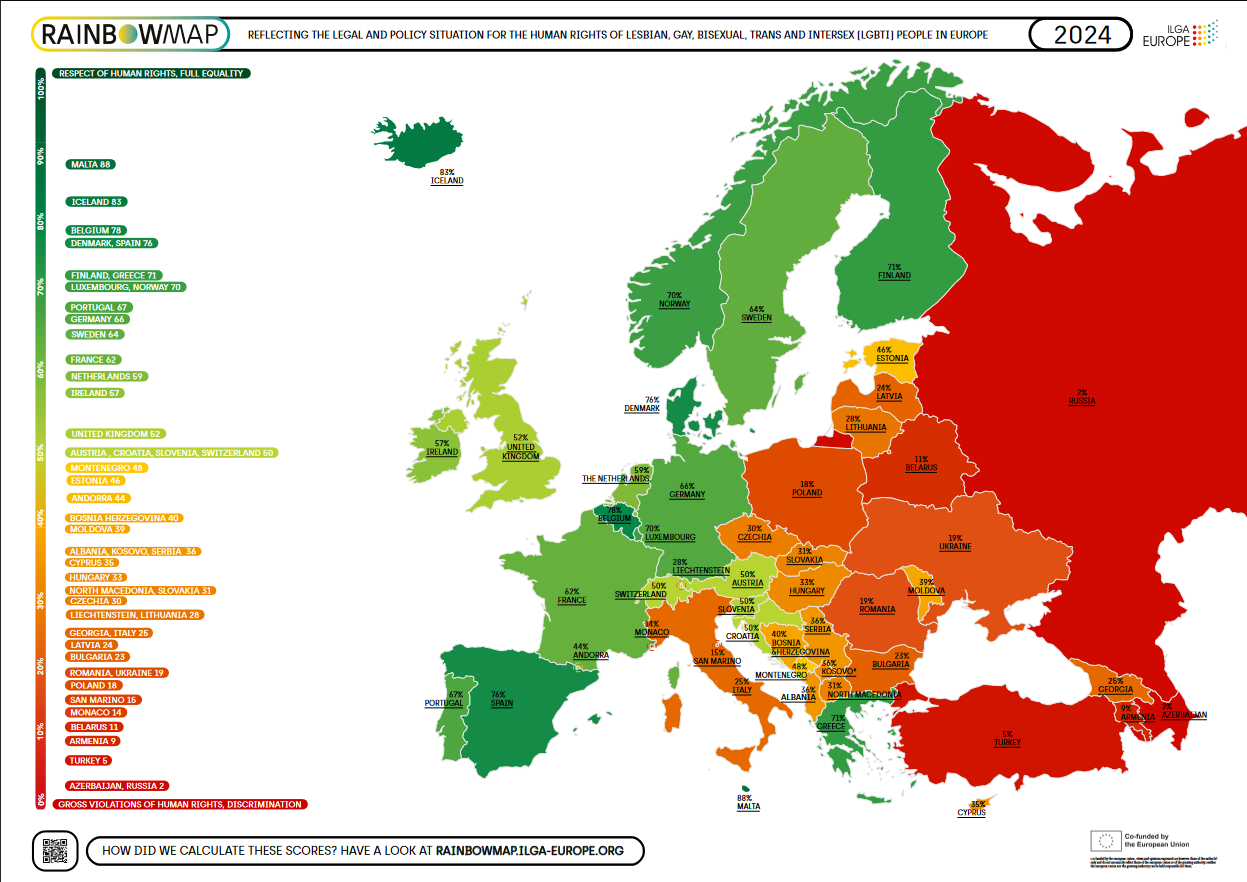
source: rainbowmap.ilga-europe.org
26. The Largest Trading Partner of European Countries
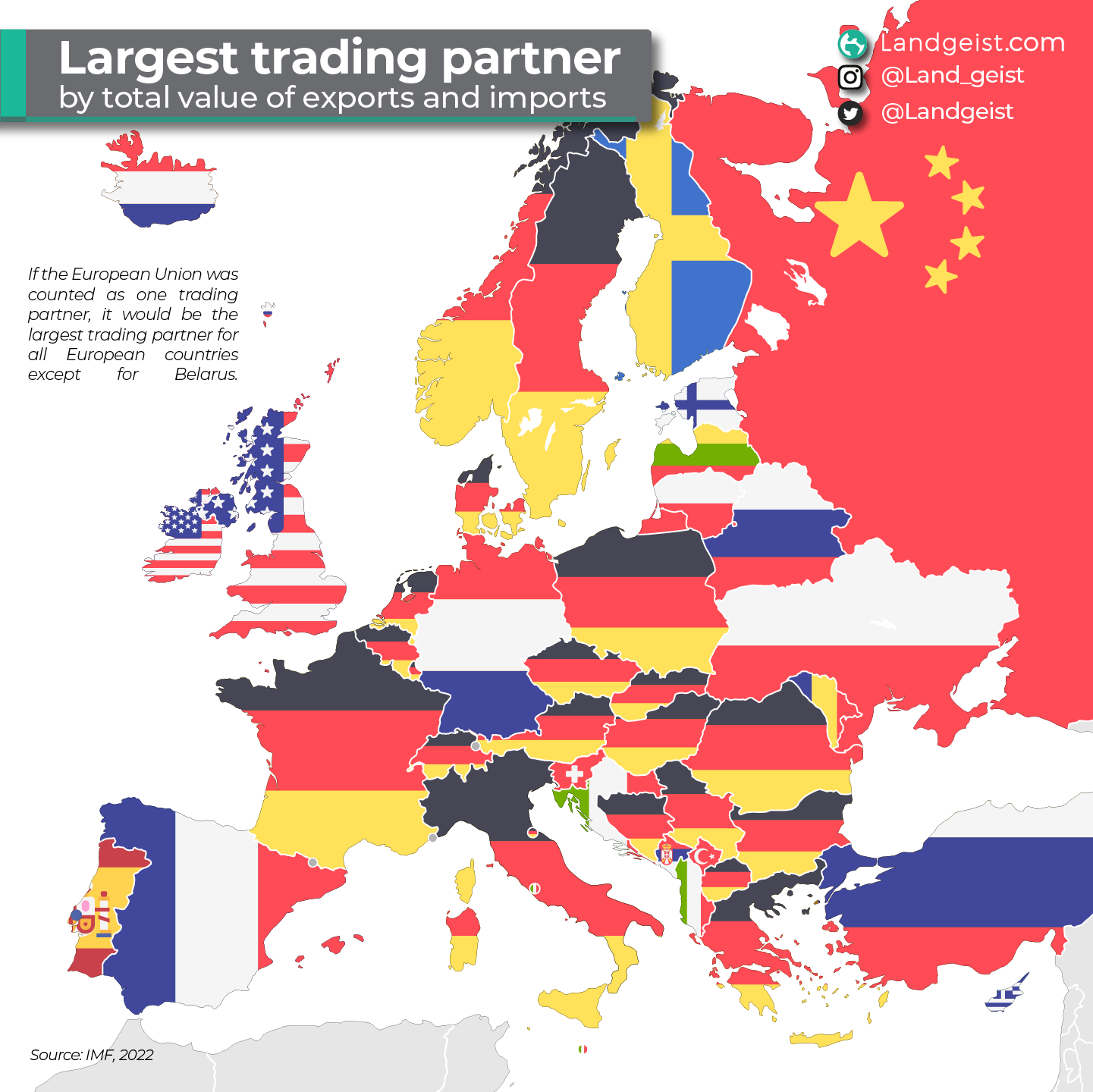
source: Landgeist
27. Average elevation above the sea level
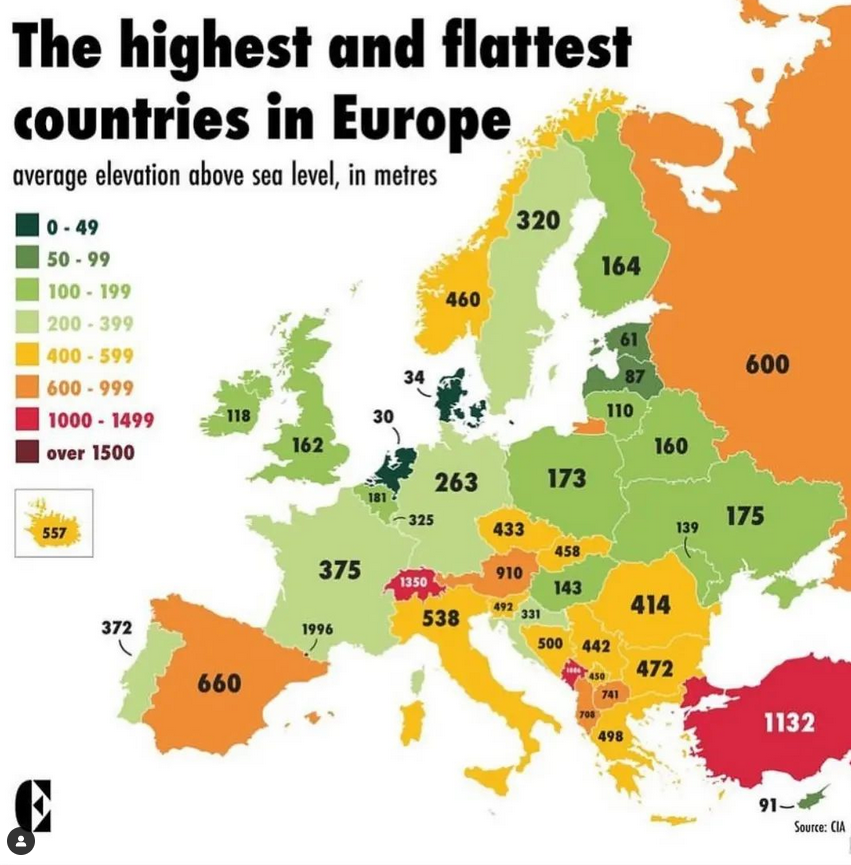
source: Instagram
28. European Transport Corridors
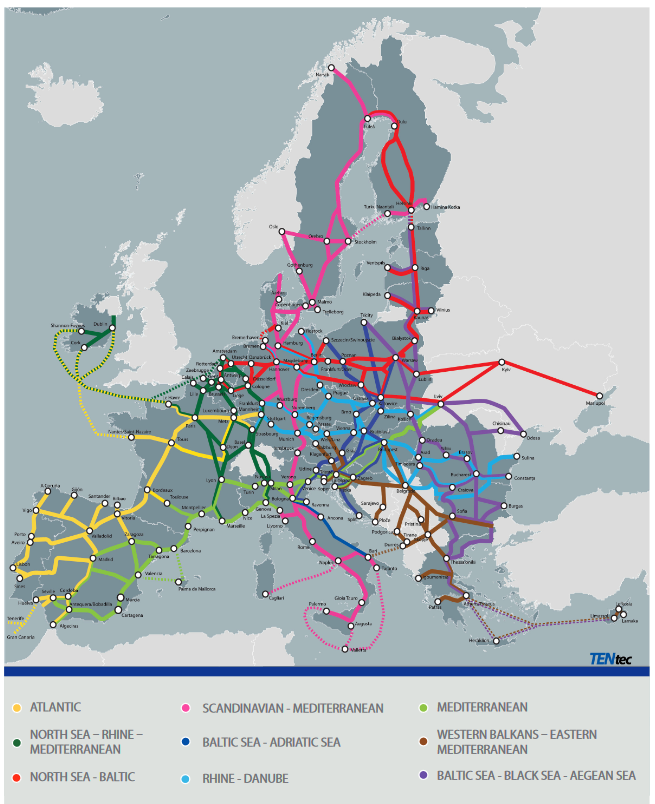
source: europa.eu
29. Terrorism in Europe in 2022
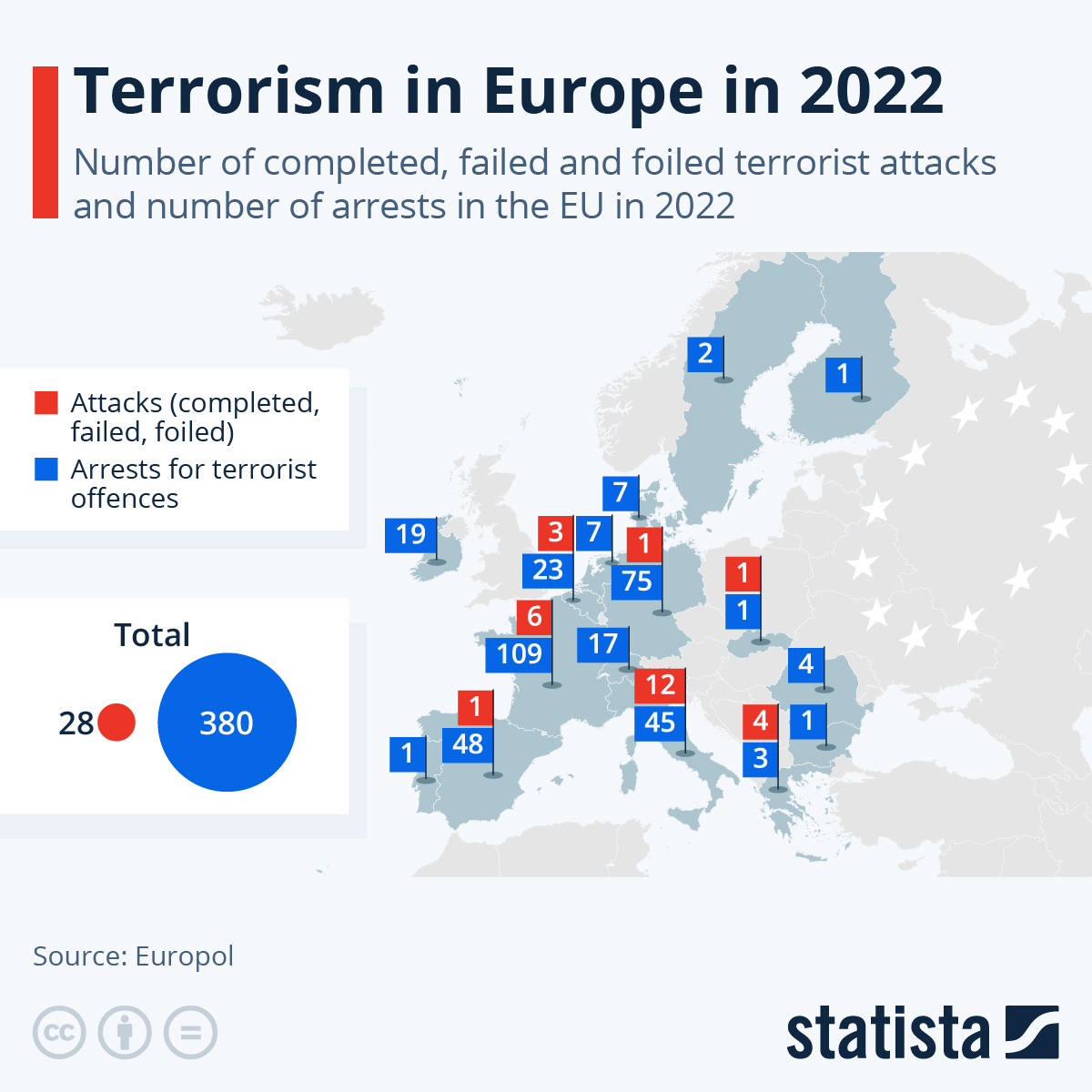
source: Statista
30. Europe’s Most Common Livestock
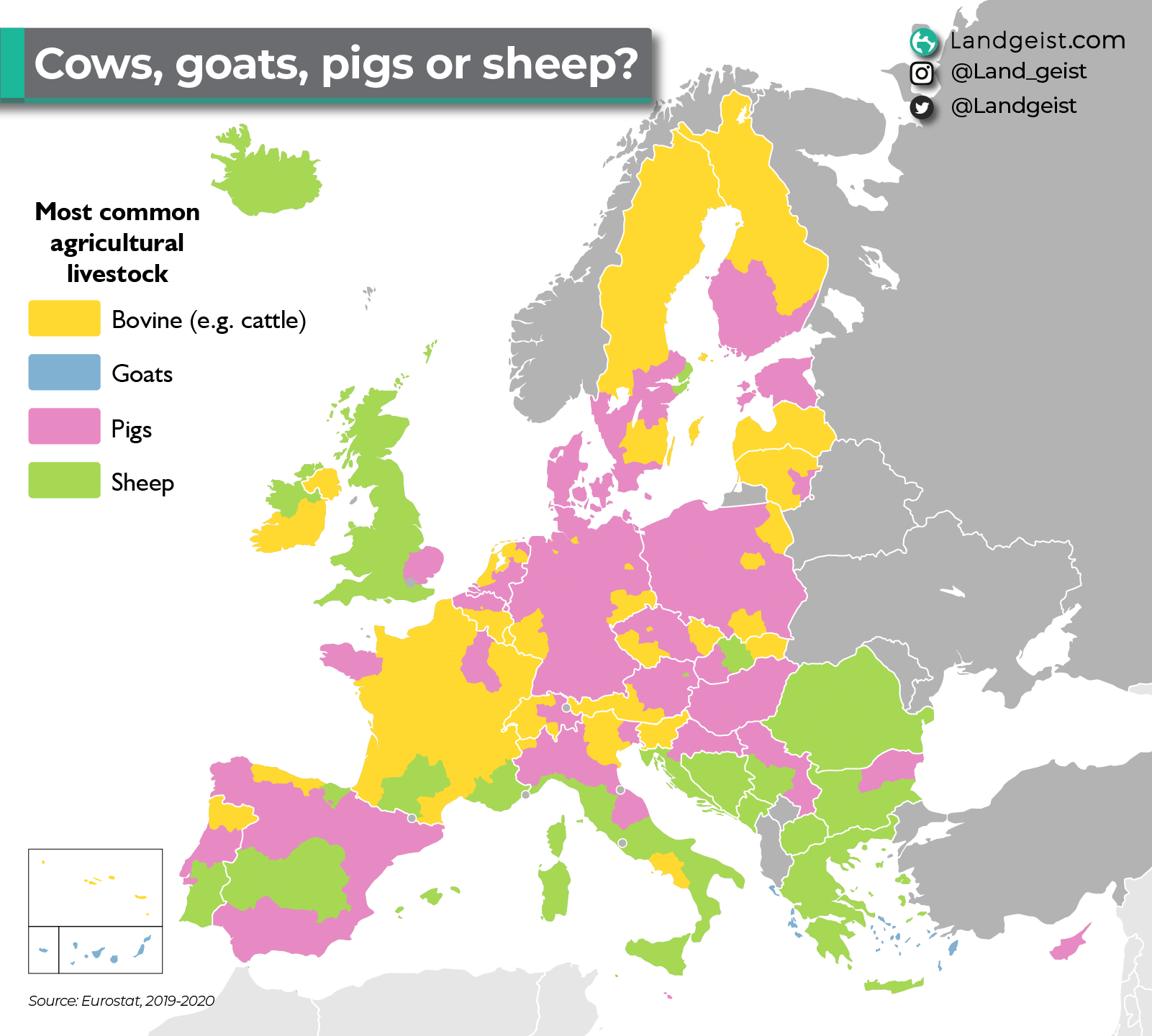
source: Landgeist
Did you like this post? Read more and subscribe to our monthly newsletter!



